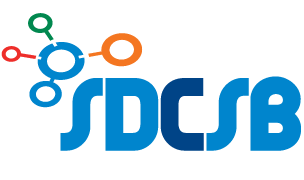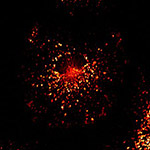Genetics, Bioinformatics and Systems Biology Colloquium
Thursdays, 12:00 pm – 1:00 pm
UC San Diego, Powell-Focht Bioengineering Hall, Fung Auditorium
Complete schedule here
In 2010, the National Institute of General Medical Sciences awarded $15 million to the University of California, San Diego, to establish a center for the study of systems biology (P50 GM085764). The Center grew out of the San Diego Consortium for Systems Biology. This group was started by Amy Kiger and Sumit Chanda to organize workshops and symposia to foster collaborations between technologists, experimental biologists and computational biologists.
The mission of the San Diego Center for Systems Biology is to advance the discipline and application of systems biology in the greater San Diego area and to serve as a nucleus for systems biology education and training. The SDCSB brings together a community of 19 outstanding faculty, over 100 trainees and technical staff spanning four world-renowned institutions: the University of California San Diego, the Salk Institute for Biological Studies, the Sanford-Burnham Medical Research Institute and the Ludwig Institute for Cancer Research, all located on the Torrey Pines research mesa.
Over the past five years our research has led to significant systems biology advances, including genome-wide studies of how stress remodels transcriptional and genetic networks, discovery of an independent metabolic clock coordinating cell growth through cycles of TOR1 activity, demonstration that much of the Gene Ontology can be inferred directly from ‘omics data, prediction of cancer survival time and drug response by an approach called Network Based Stratification and a series of major feats in engineering of synthetic coupled genetic circuits. We began two successful annual symposia, formal systems biology coursework, a seminar series and journal club, workshops on systems biology techniques and a faculty seed grant program that was used to recruit 10 new systems biology faculty to UCSD. We successfully trained more than 90 graduate students and postdoctoral fellows, seven who are now in independent positions.
The theme of our new funding period – “From Maps to Models” – addresses an important challenge in systems biology: traversing between network maps and mathematical models, two very successful but so far mostly separate biological representations and modes of study. Network maps tend to be global, static, abstract and descriptive, whereas mathematical models tend to be local, dynamic, detailed and predictive. Guided by this overarching theme, four SDCSB research projects seek to develop a general library of maps and models relevant to fundamental cellular and super-cellular processes, including the spatiotemporal architecture of the genome, protein turnover dynamics, cell-cell communication and heterogeneity, and environment-genome interactions. These mapping and modeling activities are fueled by technologies advanced across three SDCSB core platforms, aspects of which serve as an exemplar for systems biology efforts nationally and internationally.















